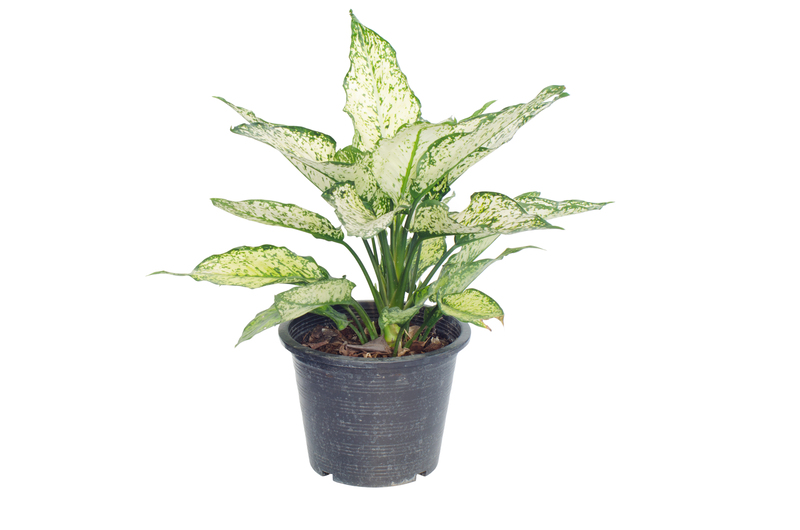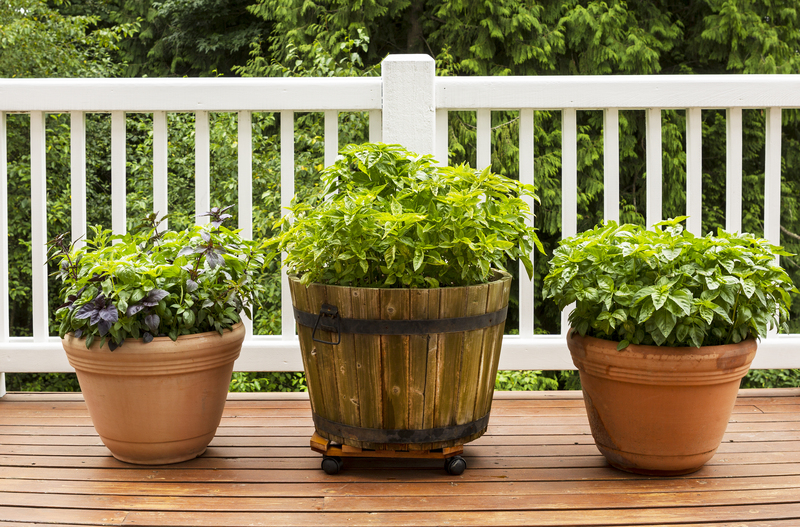Discover the Joy of Growing Orchids
Posted on 19/09/2025
Discover the Joy of Growing Orchids
Embracing the beauty and diversity of orchids can be a truly rewarding gardening journey. Orchids, renowned for their intricate blooms and exotic charm, are a favorite among plant enthusiasts. Despite common misconceptions, growing orchids at home can be surprisingly manageable and endlessly delightful with the right guidance. Whether you're a beginner or a seasoned gardener, learning how to nurture and cultivate these stunning flowers adds freshness and elegance to any indoor or outdoor space. In this comprehensive guide, we'll explore how to start your orchid collection, provide effective care, and experience the genuine pleasure found in every bloom.
Understanding Orchids: A World of Diversity
Orchids belong to the Orchidaceae family, one of the largest families of flowering plants. With over 25,000 species and more than 100,000 hybrids, the variety and adaptability of orchids make them a truly remarkable addition to any home or garden. No matter where you live, there's likely an orchid species perfectly suited to your environment.
- Phalaenopsis (Moth Orchid): Ideal for beginners; tolerant and available in many colors.
- Cattleya: Known for their vibrant, fragrant flowers.
- Dendrobium: Popular, versatile, and stunningly diverse.
- Oncidium (Dancing Lady Orchid): Famed for their profuse, delicate blooms.
- Vanda: Stunning and demanding, but incredibly rewarding for the dedicated grower.
Each species comes with its unique care requirements, but most thrive in environments that mimic their tropical origins. Start by understanding which type of orchid appeals to you and matches your local conditions.

The Benefits of Orchid Growing
Why should you consider raising orchids at home? Cultivating these beautiful plants provides a host of benefits for gardeners and plant lovers of all experience levels:
- Air Purification: Like many houseplants, orchids help improve indoor air quality by absorbing carbon dioxide and releasing fresh oxygen.
- Stress Reduction: Caring for orchids offers a mindful, relaxing hobby, helping to relieve stress and promote wellness.
- Decorative Elegance: Their exotic flowers add class and tranquility to living spaces.
- Educational Value: Learning about orchid species and their care can be fascinating, broadening your knowledge of botany and gardening.
- Endless Variety: The immense diversity of orchids means never running out of new varieties to grow and enjoy.
Getting Started: Choosing Your First Orchids
If you're beginning your journey into growing orchids at home, selecting the right kind is vital for success. It's easy to get swept away by exotic-looking specimens, but start with varieties that are manageable and forgiving for beginners.
Best Orchids for Beginners
- Phalaenopsis: The moth orchid is resilient and widely available. With proper care, it will bloom reliably and survive occasional mistakes.
- Cymbidium: Known for producing long-lasting flowers in cooler conditions.
- Paphiopedilum: Also called slipper orchids, they prefer typical home environments and are easy to acclimate indoors.
When purchasing your first orchids, look for healthy, pest-free plants with strong green leaves and unblemished roots. Avoid those with soft, yellowing leaves or visible signs of disease.
Essential Orchid Care Tips
Growing orchids successfully revolves around understanding their basic needs. Though each species is unique, they share similar requirements for light, humidity, water, and nutrition.
1. Light
Orchids love bright, indirect light. A windowsill facing east or shaded south/west windows are often ideal. Too little light results in poor flowering and dark green leaves, whereas too much light may scorch the leaves, leaving them with yellow or brown spots.
- Phalaenopsis and Paphiopedilum: Prefer lower light conditions; perfect for indoor, north-facing windows.
- Cattleya and Vanda: Thrive with brighter, filtered light; consider a sheer curtain for sunny spots.
2. Watering
Striking the balance between underwatering and overwatering is essential. Most orchids prefer to dry out slightly between waterings. Use your finger to feel the potting mix--if it's dry an inch below the surface, it's time to water.
- Always use room-temperature water. In winter, avoid cold tap water which can shock the roots.
- Never let orchids sit in water. Ensure pots have proper drainage to prevent root rot.
3. Humidity
Most orchid species enjoy humidity levels between 40% and 70%. In drier homes, especially with central heating, consider increasing humidity with these methods:
- Place orchid pots on a shallow tray filled with pebbles and water (the bottom of the pot should not touch the water).
- Use a room humidifier nearby.
- Mist plants occasionally, but avoid soaking the flowers or foliage.
4. Temperature
Orchids generally prefer daytime temperatures of 65-80?F (18-27?C) and nighttime temperatures about 10-15 degrees lower. Avoid placing orchids near heaters, air conditioners, or draughty windows.
5. Fertilizing
During the growing season (spring and summer), feed your orchids with a weak solution of balanced orchid fertilizer every 2-4 weeks. In autumn and winter, reduce feeding to match the plant's slower growth cycle.
Tip: "Feed weakly, weekly" is a common orchid grower's mantra - dilute your fertilizer to half recommended strength.Potting and Repotting Orchids
Orchids seldom grow in traditional soil. They require a coarse, airy mix such as bark chips, sphagnum moss, or a commercial orchid mix to mimic their natural epiphytic roots. Here's how to repot your orchids for optimal health:
When to Repot
- Every 1-2 years, or when the potting medium breaks down and retains too much moisture.
- If roots outgrow the pot, or the plant appears top-heavy.
- After a flowering cycle finishes.
How to Repot Orchids
- Gently remove the orchid from its pot and rinse background old medium from roots.
- Trim away any dead, decayed, or mushy roots with sterilized scissors.
- Place the orchid in a clean pot just large enough for the roots, and surround them with fresh, moistened orchid mix.
- Allow the plant a period of rest in a shaded area for a week before returning it to its usual light spot.
Tip: Choose clear plastic pots for easier monitoring of moisture and root health.
Common Orchid Growing Challenges & Solutions
Though generally resilient, orchids are susceptible to a few common issues. Recognizing and addressing problems early leads to robust, healthy plants.
1. Pests and Diseases
- Aphids, mealybugs, or scale insects: Treat by wiping leaves with a mild soap solution and removing pests with cotton swabs.
- Root rot: Almost always caused by excess moisture. Repot in fresh mix, trim unhealthy roots, and adjust your watering habits.
- Leaf spot or fungal infections: Maintain good air circulation, avoid wetting foliage, and promptly remove infected leaves.
2. Lack of Blooms
Not seeing flowers? The culprit is often insufficient light, poor nutrition, or a need for a temperature drop at night. Adjust care accordingly and be patient--healthy orchids will reward you with spectacular blooms in time.
3. Yellow or Drooping Leaves
Some leaf loss is natural, but persistent yellowing or limp leaves usually signals overwatering, lack of light, or nutritional deficiencies.
Propagating Orchids: Expand Your Collection
Once you've enjoyed your first orchid blooms, you may want to multiply your collection. Propagation is possible for many types of orchids using:
- Division: Gently separate mature plants into individual sections, each with at least three healthy pseudobulbs.
- Keikis: (Hawaiian for "baby") - these miniature plantlets sprout on flower spikes of certain orchids, such as Phalaenopsis and Dendrobium. Once roots develop, gently detach and pot separately.
Patience is key. New divisions and keikis may take a couple of years before they flower, but the reward is well worth it.
Orchid Display and Styling Ideas
Orchids are not just houseplants--they're living art! Their sculptural shapes and vibrant colors make them ideal for creative home and garden displays.
- Modern elegance: Showcase a single orchid in a clear glass vase or minimalist ceramic pot.
- Indoor gardens: Create a lush orchid arrangement with other tropical plants for a bold statement.
- Terrariums: Small orchids thrive in glass enclosures with high humidity.
- Hanging baskets: Vanda and Oncidium species look amazing suspended by their aerial roots.
Seasonal Orchid Care
Orchid care doesn't end with a single season. Adapting your routine throughout the year is critical for healthy, repeat blooms.
- Spring-Summer: Increase watering and fertilizing as orchids enter their active growth period. Ensure plenty of fresh air and monitor for pests.
- Autumn: Begin to reduce watering as temperatures cool. Some types (like Cymbidium) require cooler nights to initiate flowering.
- Winter: Place plants where they'll receive maximum available light. Reduce watering and avoid misting to prevent leaf damage in cool conditions.

Frequently Asked Questions About Orchid Growing
- How often do orchids bloom?
Each species is unique: Phalaenopsis often blooms once or twice per year, while Cattleya may flower several times annually with proper care.
- Are orchids toxic to pets?
Most orchid species, including Moth Orchids, are non-toxic to cats and dogs.
- My orchid looks dead after flowering. What should I do?
Orchids go dormant after blooming. Trim old flower spikes back and continue standard care; new growth usually appears within months.
- Can orchids grow outdoors?
Yes, in frost-free climates. In cooler zones, bring orchids inside during cold months.
Conclusion: Experience the Magic of Orchids
Growing orchids is a hobby that combines artistry, science, and a love of nature. With their graceful blooms and captivating forms, orchids bring an unmatched beauty and serenity to any space. With patience and a willingness to learn, anyone can cultivate orchids successfully--enjoying new growth, reblooms, and even sharing divisions with friends. Embrace the joy of growing orchids and let their living elegance inspire your home and garden for years to come.
Discover your passion for orchid growing today--choose your favorite varieties, experiment with display ideas, and immerse yourself in the fascinating world of these exquisite flowers. Happy gardening!

